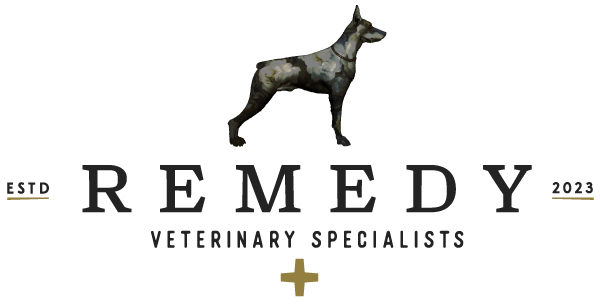Two Weeks Post-Operative Instructions for Spinal Surgery
Introduction
Your pet’s incision is healed. They can now have a bath. Make sure to provide them with a good non-slip surface, or bathe them in the sink so they do not fall and hurt themselves.
There are layers of suture underneath the skin that will dissolve slowly over the next several months. You may see a piece of suture (usually purple or clear) work its way through the skin as the body heals. If this happens and it does not bother you or your pet, you can ignore it as it will eventually dissolve. If it seems to bother your pet, feel free to come to the hospital and we will help remove it.
Resting your pet
Continuing with strict rest is an important part of healing. If your pet becomes more comfortable and mobile, they may start to resent the crate confinement. However, it is still VERY important to confine them. Pets that are feeling better can over do it and hurt themselves badly at this stage of recovery. If you feel like you need sedatives to help them rest, please tell your veterinarian.
Physical Therapy
Massage and Range of Motion: Passive range of motion exercises will help keep your pet’s joints comfortable and flexible. Physical therapy should be performed a few times a day.
To perform range of motion exercises, start with a gentle massage. Rub your pet’s leg from the tip of their toes to the top of the leg. Then starting with the toes gently flex and extend each joint in the leg 10 times. You want to take the joint to the normal comfortable extent of where it can go. Think of it as a gentle stretch. After you have done all the joints- toes, ankles, knee and hip in the back and toes, wrist, elbow and shoulder in the front, take each leg in a gentle bicycling motion for 10 repetitions. Repeat for each leg.
Remember, physical therapy should not be painful. Try to make this a positive experience for your pet. Talk to them, use a gentle touch and give them treats during.
Sling Walks: As your pet is learning to walk again they may need help with a sling. Place a sling or a rolled towel under your pets belly just in front of their back legs. Hold this sling in your right hand, and the leash in your left hand. Guide your pet on a short walk. It's important that they go slow to help the focus on moving their back legs and on foot placement.
As your pet gets stronger, gradually give less weight support with the sling. Until they are sure on their feet, continue to use the sling as support, especially on obstacles like stairs or slick floors.
Sling walk your pet for five to 10 minutes twice a day.
Referral to a Rehabilitation Specialist: If you would like to have an appointment with a certified pet rehabilitation specialist, please let us know so that we can refer you. Many pets will recover with just these provided exercises and time. However, some pets, especially those with significant injuries or delayed recoveries, will benefit from a more intense and supervised exercise program.
Bladder Care
Pets with spinal injuries commonly get bladder infections. Please monitor for any change in the color or smell in your pet’s urine and contact the hospital if you have concerns.
Some pets will need help urinating after a spinal injury. If your pet is one of these patients, we will also provide you with a handout on bladder expression. It is very important that your pet urinates at least once every 24 hours. If your pet has not urinated in over 24 hours or if they are constantly dribbling urine, please contact the hospital urgently.
Medications
As your pet is healing, they should gradually need less medication over time. Try to reduce the dose and frequency of pain medication, with the goal of being completely off of pain medication by 4 weeks. Use sedatives as needed to keep your pet comfortably crate confined.
Things to watch for:
Please check your pet’s incision site everyday. If it looks red, swollen or is leaking any type of fluid please snap a picture and email us at the hospital.
If your pet is experiencing any of the following please seek urgent veterinary advice:
Moderate to severe pain despite medication
Ability to walk or move getting worse
Have not urinated in over 24 hours
If your pet is not improving over the course of several weeks, or you feel at any point they are starting to get worse, contact your medical team for advice.

